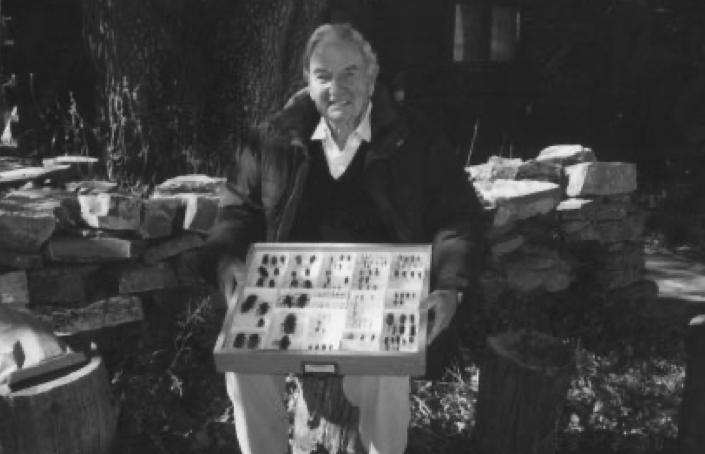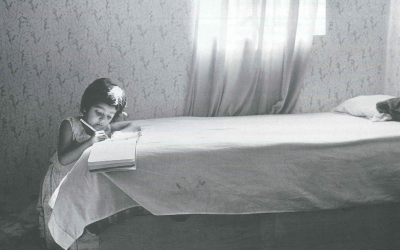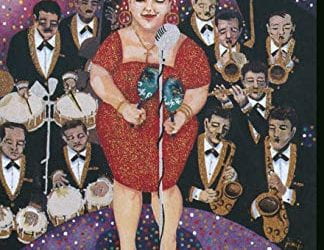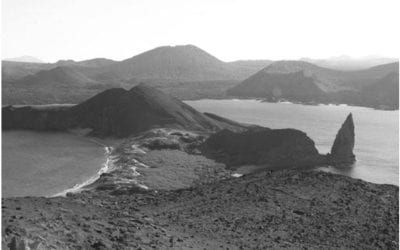The Natural World
A Personal Reminiscence
In the late spring of 1934, towards the end of my sophomore year at Harvard College, I received a letter from Dr. Frank E. Lutz, Entomology Curator at the American Museum of Natural History in New York City, inviting me to join a scientific expedition the museum was dispatching to the Grand Canyon of the Colorado in northern Arizona.
The expedition’s primary focus that summer, Dr. Lutz informed me, would be to collect specimens of the phylum Insecta(or “bugs” as most people refer to them) in the canyon itself and the surrounding mountains to determine whether there was a correlation between their altitudinal and latitudinal variation, an important, and still unresolved scientific issue, at the time. (In the end, we were able to show that species of insects found at the bottom of the canyon along the river were also found in southern Mexico, and other species collected ten thousand feet higher in the San Francisco Peaks were indigenous to Alaska and parts of Canada).
The invitation surprised me. I was, after all, not yet nineteen years of age, and I did not consider myself a trained scientist. Nonetheless, I eagerly accepted the invitation, and in June of that year, as soon as exams ended, I set out with Paul Geier, one of my Eliot House suite mates, to join the other members of the expedition in Flagstaff, Arizona.
Many tend to think of “bugs” as bothersome, annoying or dangerous, and never take the time to look carefully around them and to appreciate the beauty and intricacy of the natural world; just think of the architectural audacity, engineering skill and dogged persistence of a spider weaving a web or the complex social life and cooperation of ants and bees.
Those remarkable qualities reflect the reason I have chosen this issue of ReVista, the Harvard Review of Latin America,celebrating the 10th anniversary of the David Rockefeller Center for Latin American Studies, to reflect on my own relationship to flora and fauna, and most particularly beetles.
My relationship with “bugs” began years before the expedition invitation. Perhaps I should pause here to offer a bit more of an explanation as to why this invitation was so appealing to me, especially since many people find my lifelong and passionate interest in Coleoptera (or beetles) somewhat unusual, or even eccentric.
I first became interested in collecting and studying beetles through Howland Sperry, a teacher of mine at the Lincoln School of Teachers College in New York. Mr. Sperry spent the summer following my fifth grade year at the Eyrie, my parents’ summer home, in Seal Harbor, Maine, tutoring my brother Winthrop and me. Mr. Sperry was interested in biology and got me started catching insects with a net. That same summer I participated in a nature-study class attended by other children my age, including Henry Ford II, who summered on Mount Desert Island, and became increasingly interested in the study of nature.
My parents wanted to encourage this burgeoning curiosity, and upon our return to New York that fall, arranged for me to visit the entomology department at the Museum of Natural History so that I could begin to identify the various specimens I had collected. Although I started out collecting all kinds of insects, I soon focused exclusively on beetles. Beetles had the advantage of having hard outer wings, called elytra, which make them easier to preserve than other insects. There are also more species of beetles in the world than of any other group of animal life—more than 250,000 species. I found myself being drawn deeper and deeper into this fascinating world.
My weekly visits to the Museum of Natural History soon brought me into contact with Dr. Lutz, who, in addition to curating the beetle collection, was writing The Field Guide to Insects, destined to become the standard text in the field for many years. Dr. Lutz invited me spend the summers of 1928 and 1929 (at the ages of thirteen and fourteen) at the Station for the Study of Insects at Tuxedo Park, New York, which I did.
By that time, I had become fairly proficient at identifying the various beetle specimens that I had begun to avidly collect wherever I went, for instance in Yellowstone Park in the summer of 1927, and most memorably, during a trip up the Nile River in Egypt with my parents in the Spring of 1929, where I was able to secure a number of scarabs among the ruins of Memphis and the City of the Dead. Most often, however, I would hang a sheet in front of my bedroom window at the Pocantico Estate, place a lamp behind it, and watch thousands of insects flutter towards the source of illumination. Within a half hour I would have dozens of beetles to identify and add to my growing collection.
Thus, by the time I entered Harvard in September of 1932, I had a fairly detailed knowledge of at least one branch of science-entomology.
In fact, my entomological background enabled me to take a graduate level zoology course during my freshman year. And, while I struggled terribly trying to learn German (an eventually having to drop the course) and with a few of my other courses, I am proud to say I earned an A minus in zoology-the only A during my entire undergraduate career.
My interest in beetles also earned me a coveted invitation to lunch with the famous Dr. Thomas Barbour, the distinguished naturalist and director of Harvard’s famous Museum of Comparative Zoology (MCZ). The invitation actually originated with Harvard’s president, A. Lawrence Lowell, who had learned of my entomological interest from my parents. I was somewhat taken aback by the invitation, but dutifully appeared at the MCZ at the appointed time, and spent a somewhat nervous two hours in Barbour’s beautiful, high ceilinged office listening to the discourse of these two famous and influential men, and diffidently answering their questions. It was quite a harrowing lunch for a freshman, but, at least, in retrospect, I enjoyed it immensely.
In the years since graduating from Harvard in 1936, I have continued to add to my collection, which now comprises more than 90,000 specimens, including nine thousand species, and, most importantly, four hundred types, which are the beetles from which the species itself have been scientifically described and classified. Like most collectors, I have learned to concentrate, and the most valuable specimens in my collection are from the families Carabidae, Buprestidae, Cerambycidae, and Chrysomelidae. My real favorites, however, are the Scarabaeidae, the family of dung-beetles and June beetles, which also includes the beautiful scarabs who were sacred to the ancient Egyptians. I can understand why.
I have collected beetles in almost every part of the world, and continue to add to my collection on an almost weekly basis. In recent years, I have collected rare specimens in the Amazon basin in both Brazil and Venezuela, amidst the ruins of Mayan temples in the Yucatan, and high in the peaks of the Andes near Machu Pichu in Peru. It remains a wonderfully satisfying hobby, and through it I have learned a great deal about nature’s underlying order and diversity, as well as the interconnectedness of all living things.
I am pleased that my collection will become part of the Museum of Comparative Zoology at Harvard in the future.
Fall 2004/Winter 2005, Volume III, Number 1
David Rockefeller is the founding benefactor of the David Rockefeller Center for Latin American Studies and Chair of the DRCLAS Advisory Committee.
Related Articles
Editor’s Letter: Flora and Fauna
Ellen Schneider’s description of Sandinista leader Daniel Ortega in her provocative article on Nicaraguan democracy sent me scurrying to my oversized scrapbooks of newspaper articles. I wanted to show her that rather than being perceived as a caudillo
Bilingual Aesthetics: A New Sentimental Education
After an exhausting game of soccer with a crew of Mexico City street children, Vicente, a young teenager of 13 said, “Vamonos a la verga.” It was my third day with Casa Alianza, the international…
Nature and Citizenship
Two first-time visitors to the Galapagos archipelago begin their experience in exactly the same way. Two hours after departing mainland Ecuador, their plane descends towards the island of…





